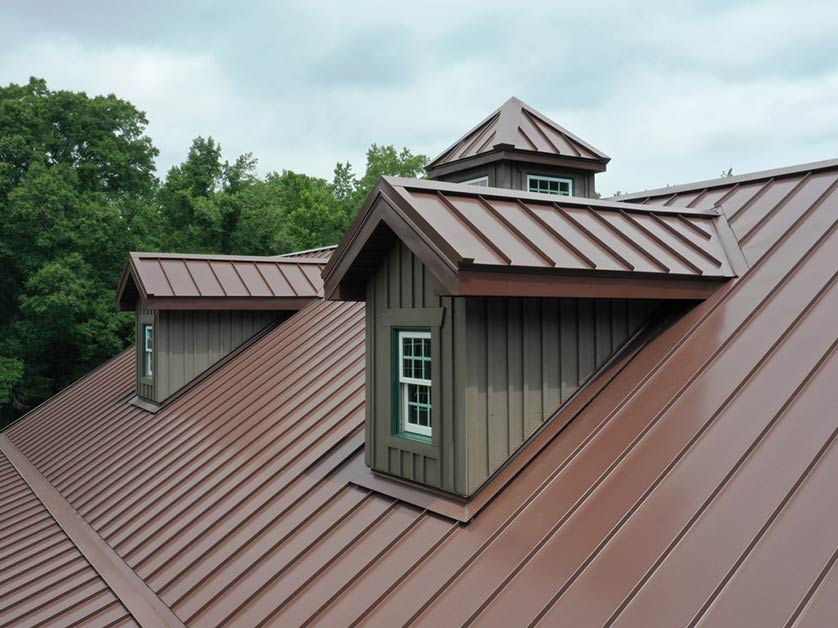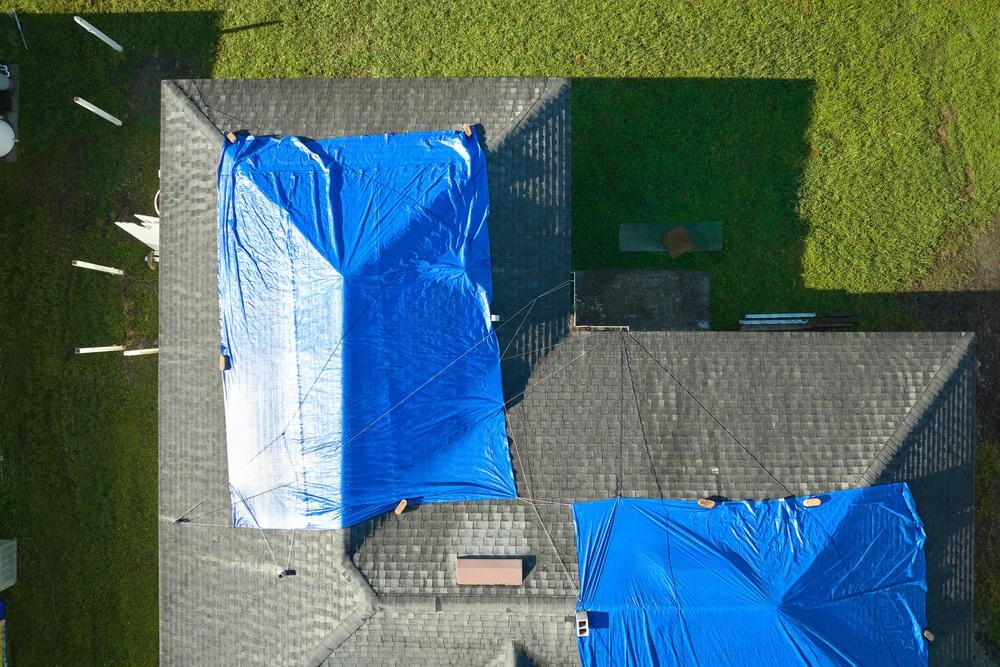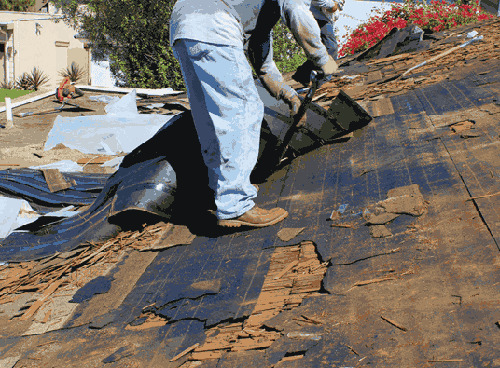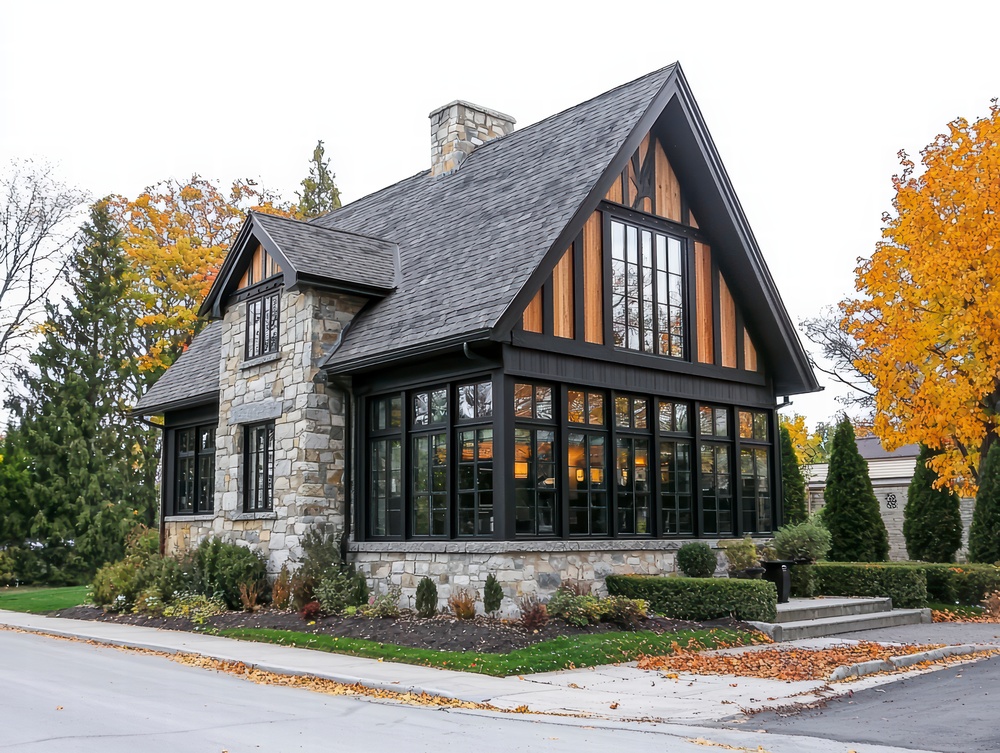If you live in the Twin Cities, you’re no stranger to muggy summer days and high humidity levels. While humidity may be great for your garden, it can wreak havoc on your home’s roofing system. Excess moisture can accelerate deterioration, promote mold and algae growth, and shorten the lifespan of your roof. So what’s the best type of roofing for humid climates? Krech Exteriors is here to help you make the right choice for lasting performance and peace of mind by selecting the best roofing material for hot and humid conditions.
Introduction to Humid Climate Roofing
Humid climates pose unique challenges for roofing materials, including high humidity and frequent rainfall. In such environments, it’s essential to choose a roofing material that can withstand moisture and prevent mold growth. Metal roofing is a popular choice for humid climates due to its ability to reflect sunlight and resist corrosion. Its smooth surface allows rain and condensation to drain quickly, reducing the risk of water damage.
Clay tiles are another viable option, as they have a natural ability to repel water and resist mold. Their dense composition makes them highly durable and capable of withstanding the effects of high humidity. Proper maintenance is crucial to ensure the longevity of roofs in humid climates. Regular inspections can help identify potential issues before they become major problems, ensuring your roof remains in top condition.
The right roofing material can help reduce energy costs and keep homes cool in humid climates. Factors such as durability, energy efficiency, and cost should be considered when selecting a roofing material for humid climates. By choosing the right material and maintaining it properly, you can protect your home and enjoy long-lasting performance.
Why Humidity Matters for Your Roof
High humidity means excess moisture in the air—and eventually, in your roofing materials. Over time, this can lead to:
- Warping and buckling of materials that absorb moisture
- Mold and mildew growth in poorly ventilated spaces
- Algae stains that compromise curb appeal
- Premature aging of shingles and underlayment
In addition to humidity, strong winds can also pose a significant challenge in humid climates. Roofing materials like clay tiles and metal roofing are particularly suited to withstand strong winds, ensuring the longevity and integrity of roofing structures.
In the Twin Cities, where summer humidity is frequent and often severe, choosing the right roofing system is essential to avoid costly damage and frequent repairs.
Learn more about our roofing repair** services**.
Factors to Consider for Roofing
When choosing a roofing material, several factors should be considered, including climate, budget, and personal preferences. Climate is a critical factor, as different materials perform better in different weather conditions. For instance, materials that excel in high humidity may not be suitable for areas with extreme heat or cold.
Budget is also an essential consideration, as some materials can be more expensive than others. However, investing in a high-quality roofing material can save money in the long run by reducing maintenance and energy costs. Personal preferences, such as aesthetic appeal and durability, should also be taken into account. Some homeowners may prefer the classic look of slate tiles, while others might opt for the modern appeal of metal roofing.
Energy efficiency is another crucial factor, as some materials can help reduce energy costs. The weight and structural integrity of the material should also be considered, especially in areas with high winds or heavy rainfall. Proper installation and maintenance are vital to ensure the longevity of the roof. Researching and comparing different roofing materials can help homeowners make an informed decision that meets their needs and preferences.
Best Roofing Materials for Humid Conditions
When selecting a roof for a humid climate, moisture resistance and ventilation compatibility are key. Here are the best options for homes in the Twin Cities:
Screw down roofs are a budget-friendly alternative to standing seam metal roofs. They are known for their ease and speed of installation, making them a popular choice for homeowners looking to save on costs. These roofs perform well in high winds, which is beneficial in humid climates. However, they require more maintenance due to screws potentially loosening over time, necessitating regular upkeep to ensure longevity.
1. Metal Roofing
Metal roofs, especially standing seam panels, are naturally resistant to moisture and heat. They don’t absorb water, and their smooth surfaces allow rain and condensation to drain quickly.
- Long lifespan (40-70 years)
- Minimal maintenance
- Reflective coating helps reduce heat absorption
Reflective metal roofing is particularly effective in hot and arid climates, as it minimizes heat absorption and improves cooling efficiency by reflecting sunlight. This helps maintain comfortable indoor temperatures and lowers energy costs, making it a preferred choice for environments with intense sun exposure.
Explore our metal roofing solutions.
2. Asphalt Shingles with Algae Resistance
Not all asphalt shingles are created equal. Look for brands like CertainTeed and Owens Corning that offer algae-resistant granules and enhanced moisture protection.
- Affordable and versatile
- Available in multiple styles and colors
- Algae-resistant options extend longevity
Check out our roof replacement services.
3. Slate Roofing
Natural slate is dense, non-porous, and resistant to the effects of moisture. While it’s a premium choice, it offers unmatched durability and elegance. Additionally, the natural stone composition of slate enhances a home’s aesthetic appeal and provides excellent performance in various climates, making it a long-lasting and premium roofing option.
- Lifespan of over 100 years
- Low water absorption
- Exceptional resistance to mold and mildew
Energy Efficient Roofing Solutions
Energy-efficient roofing solutions can help reduce energy costs and keep homes cool in hot climates. Cool roofs, such as those made from metal or clay, can reflect sunlight and reduce heat gain. These materials are designed to minimize the amount of heat absorbed by the roof, keeping the interior of the home cooler and reducing the need for air conditioning.
Proper insulation and ventilation are also essential for energy efficiency. Insulation helps maintain a consistent indoor temperature, while ventilation allows hot air to escape, preventing heat buildup. Some roofing materials, such as solar panels, can even generate electricity and reduce reliance on the grid, providing additional energy savings.
Energy-efficient roofing solutions can also help reduce urban heat islands and mitigate the effects of climate change. Homeowners can benefit from energy-efficient roofing solutions by reducing their energy bills and increasing their property value. Energy-efficient roofing materials, such as recycled materials and sustainable products, are becoming increasingly popular. The right energy-efficient roofing solution can help homeowners save money and reduce their environmental impact.
Cool Roofing Benefits
Cool roofing benefits include reduced energy costs, improved indoor temperatures, and increased durability. Cool roofs can reflect up to 90% of the sun’s rays, reducing heat gain and cooling costs. By keeping the roof surface cooler, cool roofs can also help reduce urban heat islands and mitigate the effects of climate change.
Some cool roofing materials, such as metal and clay, can last up to 50 years or more with proper maintenance. Cool roofs can also improve indoor air quality by reducing the need for air conditioning, which can help lower energy consumption and costs. The benefits of cool roofing can be especially significant in hot and humid climates, where keeping homes cool is a priority.
Cool roofing materials, such as reflective coatings and membranes, can be applied to existing roofs, making it a versatile option for homeowners looking to improve their roof’s energy efficiency. The initial investment in cool roofing can be offset by the long-term energy savings and increased property value, making it a smart choice for those looking to enhance their home’s energy efficiency.
Roof Design and Shape
Roof design and shape can significantly impact energy efficiency and durability. A well-designed roof can provide adequate ventilation, reducing heat gain and cooling costs. The shape of the roof can also affect wind resistance and structural integrity, which is crucial in areas prone to severe weather events.
Some roof shapes, such as hip and gable roofs, are more energy-efficient than others. The pitch and angle of the roof can also impact energy efficiency and durability. A steeply pitched roof can provide better ventilation and reduce heat gain, helping to keep the home cooler.
The design and shape of the roof should be considered in conjunction with the chosen roofing material. A properly designed and constructed roof can help reduce energy costs, improve indoor temperatures, and increase property value. By considering these factors, homeowners can ensure their roof is both functional and efficient, providing long-lasting protection and comfort.
Proper Ventilation is Just as Important
Even the best roofing material can fail in a humid climate without adequate attic ventilation. Trapped moisture can compromise structural integrity, damage insulation, and cause energy inefficiency.
In hot and arid climates, proper air circulation is crucial for maintaining indoor temperatures. Certain roofing options, like clay tiles, contribute to comfort by allowing air circulation, which helps dissipate heat and reduce energy costs.
At Krech Exteriors, we ensure every roofing project includes:
- Ridge vents, soffit vents, or attic fans
- Balanced intake and exhaust airflow
- Compliance with local Twin Cities building codes
Read how proper roof inspections can spot these issues early.
Local Expertise Matters
With over 35 years of experience serving Minneapolis, St. Paul, and surrounding areas, Krech Exteriors understands the demands of Minnesota’s humid summers and storm-prone seasons. It is crucial to have roofing materials properly installed to ensure maximum effectiveness and durability.
We proudly install materials from:
- Owens Corning
- GAF
- CertainTeed
And we back our work with lifetime installation guarantees.
Final Thoughts
Choosing the best type of roofing for humid climates in the Twin Cities doesn’t have to be overwhelming. Whether you prefer low-maintenance metal, affordable asphalt, or elegant slate, the key is pairing great materials with professional installation and expert ventilation. It’s crucial to consider climate conditions when choosing roofing materials, as factors like heat, rain, snow, and wind can significantly impact the lifespan and performance of your roof.
Protect your investment and extend your roof’s life with help from Krech Exteriors.
Get a humidity-ready roof in the Twin Cities. Request your free estimate today or call (651) 349-6815 to speak with our team.
FAQ: Roofing and Humidity
Q: Can humidity cause roof leaks? A: Indirectly, yes. Prolonged moisture can degrade shingles, flashings, and seals, eventually leading to leaks.
Q: How do I prevent algae growth? A: Choose algae-resistant shingles and ensure adequate ventilation. Consider annual roof cleanings.
Q: Do metal roofs get hot in summer? A: Not necessarily. Many are coated to reflect sunlight and reduce heat absorption.
Q: Why is weather resistance important in roofing materials for humid climates? A: Weather resistance is crucial in humid climates because roofing materials need to withstand extreme weather conditions like heavy rain and high humidity. Options like metal, rubber, and tile roofs offer notable durability and protection against elements such as wind, rain, and hail, ensuring the longevity and efficiency of your roofing solution.






